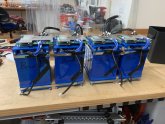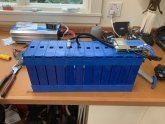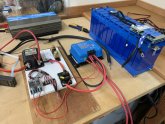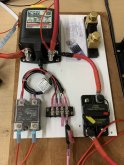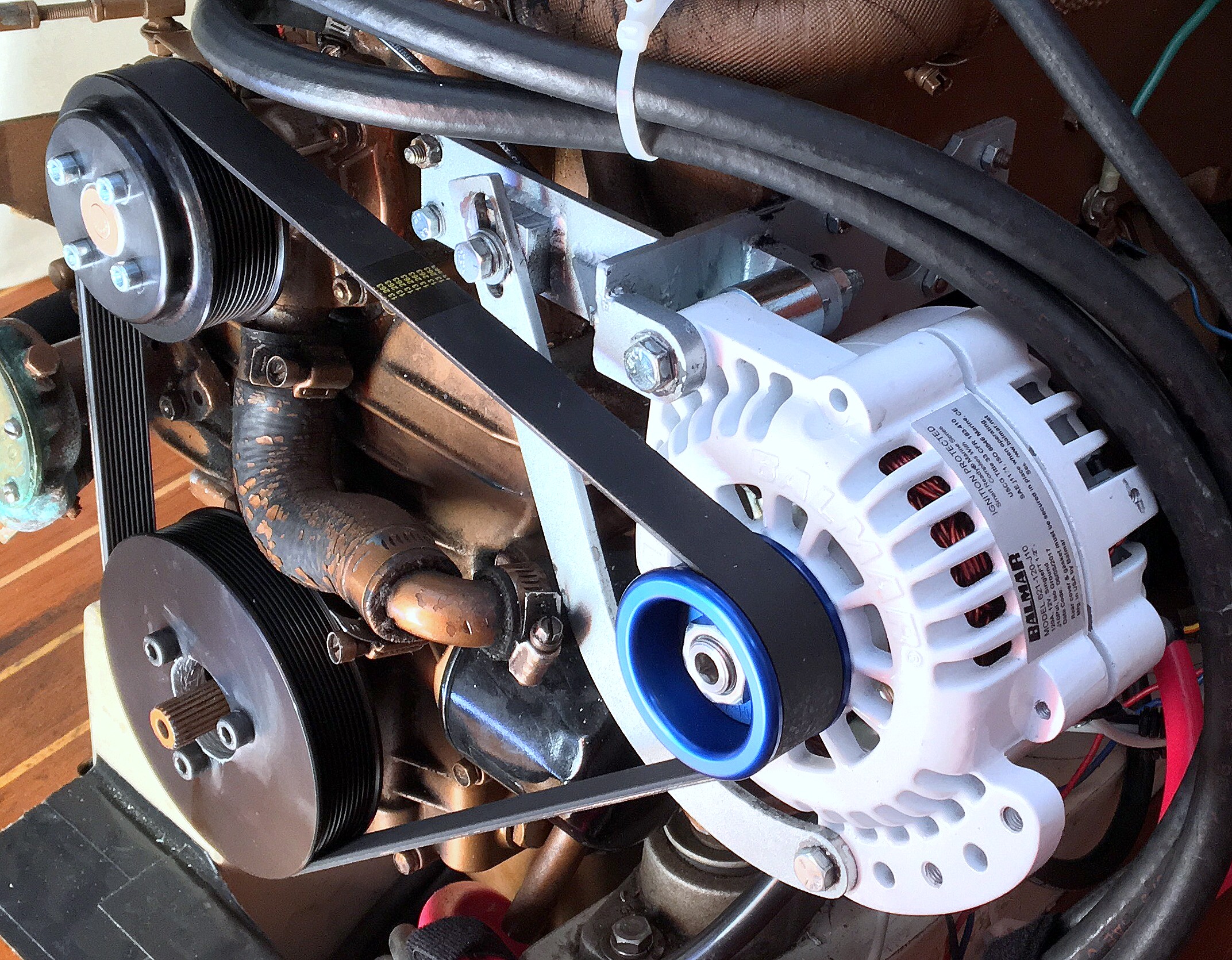I’m considering swapping out my two 12V 100Ah AGM bow thruster/anchor windlass batteries for Will's current favorite, Fortune 60A cells. Probably 16 cells in either individual 4S or 2P4S configuration. All loads 12V.
The thruster draws 4300W/12V = 360A and the windlass 1700W/12V = 142A for a total draw of some 500A on a short-term basis. Add for inefficiencies. The thruster is typically used momentarily while docking. However, the motor can run continuously for a maximum of 7.5 minutes before shutting itself down for cooling. At this time, the thruster will have withdrawn 360A(7.5/60)h = 45Ah from the battery bank. The windlass is typically used for a longer period of time raising the anchor, say 5-10 minutes. In this case, 142A(10/60)h = 24Ah.
Nominal capacity of sixteen 60Ah Fortune cells in a 12V environment is 240Ah. Max continuous discharge current is 720A. I note that I will exceed the 1/3C optimal discharge rate while using the thruster. I also note that with these cells I may have to double up on the 150A rated bus bars.
Config 1: 2 batteries in a 2P4S configuration would require one BMS for each battery capable of 250A at minimum.
Config 2: 4 batteries in a 4S configuration would require one BMS for each battery capable of 125A at minimum.
Which BMS would you recommend for each of these configurations? Low temp cut-off nice but not hugely important. I would prefer not to install external contactors. As always, add for overhead, losses and false advertising.
I welcome any responses, comments, etc.
Cheers,
Doug
The thruster draws 4300W/12V = 360A and the windlass 1700W/12V = 142A for a total draw of some 500A on a short-term basis. Add for inefficiencies. The thruster is typically used momentarily while docking. However, the motor can run continuously for a maximum of 7.5 minutes before shutting itself down for cooling. At this time, the thruster will have withdrawn 360A(7.5/60)h = 45Ah from the battery bank. The windlass is typically used for a longer period of time raising the anchor, say 5-10 minutes. In this case, 142A(10/60)h = 24Ah.
Nominal capacity of sixteen 60Ah Fortune cells in a 12V environment is 240Ah. Max continuous discharge current is 720A. I note that I will exceed the 1/3C optimal discharge rate while using the thruster. I also note that with these cells I may have to double up on the 150A rated bus bars.
Config 1: 2 batteries in a 2P4S configuration would require one BMS for each battery capable of 250A at minimum.
Config 2: 4 batteries in a 4S configuration would require one BMS for each battery capable of 125A at minimum.
Which BMS would you recommend for each of these configurations? Low temp cut-off nice but not hugely important. I would prefer not to install external contactors. As always, add for overhead, losses and false advertising.
I welcome any responses, comments, etc.
Cheers,
Doug



